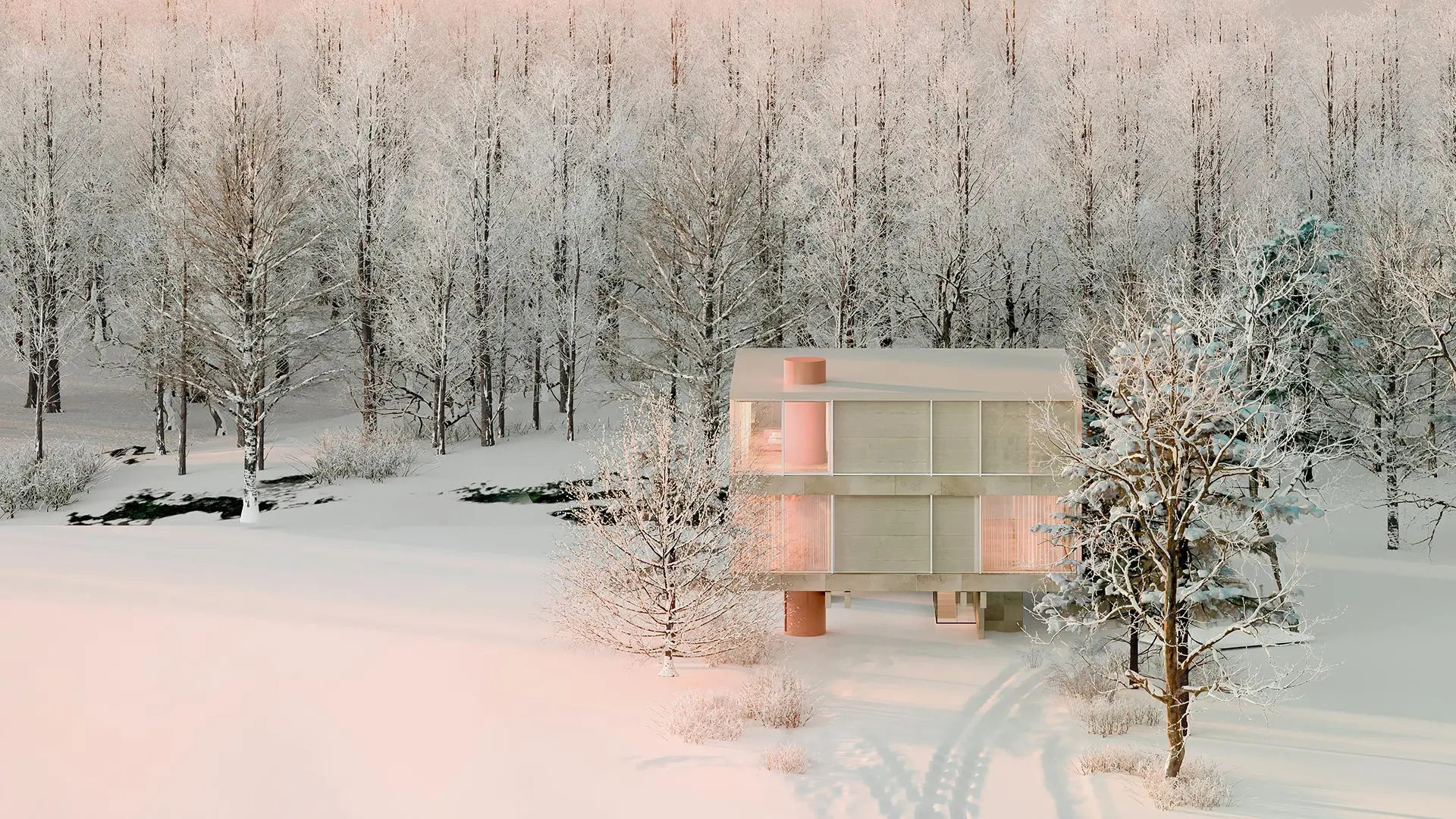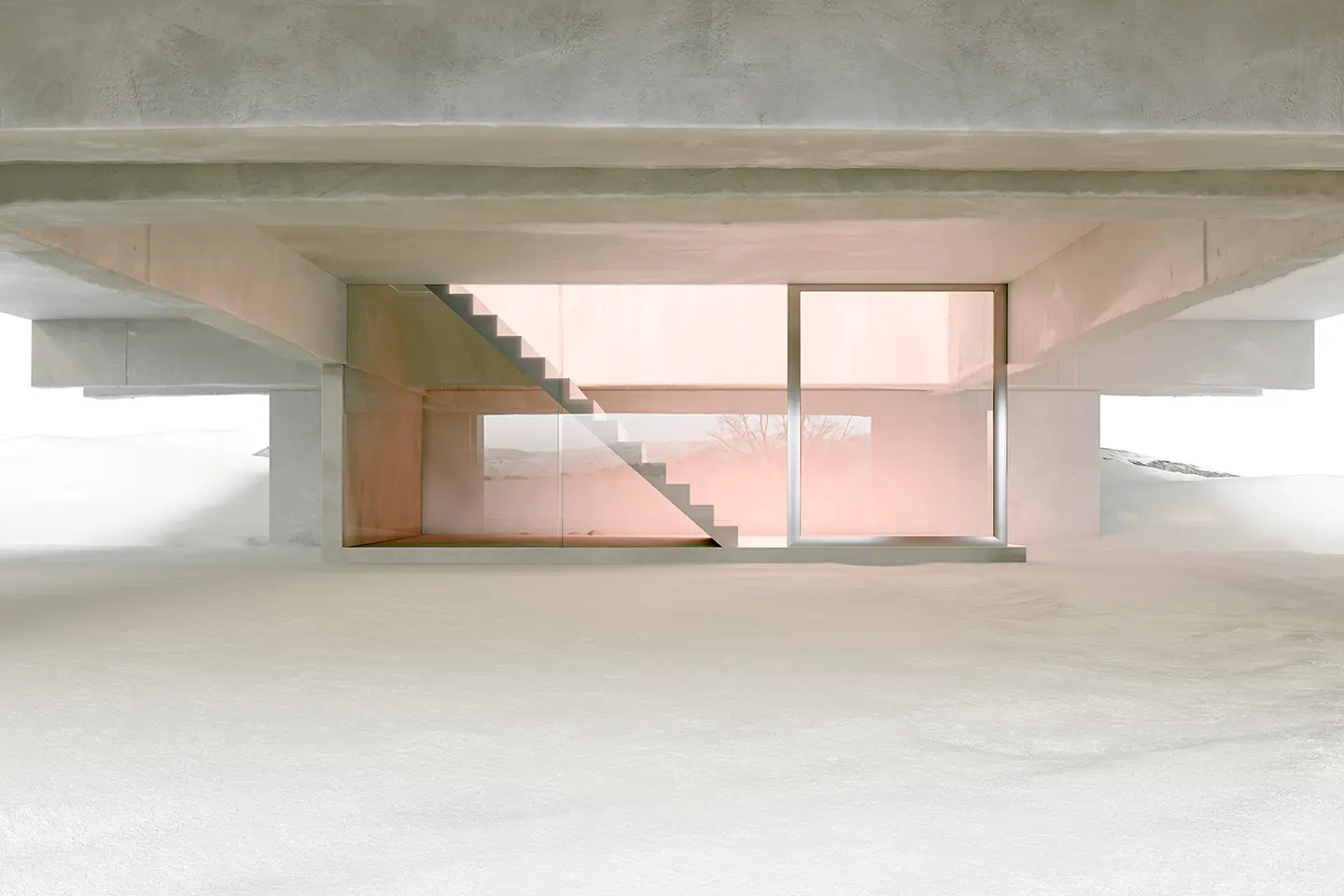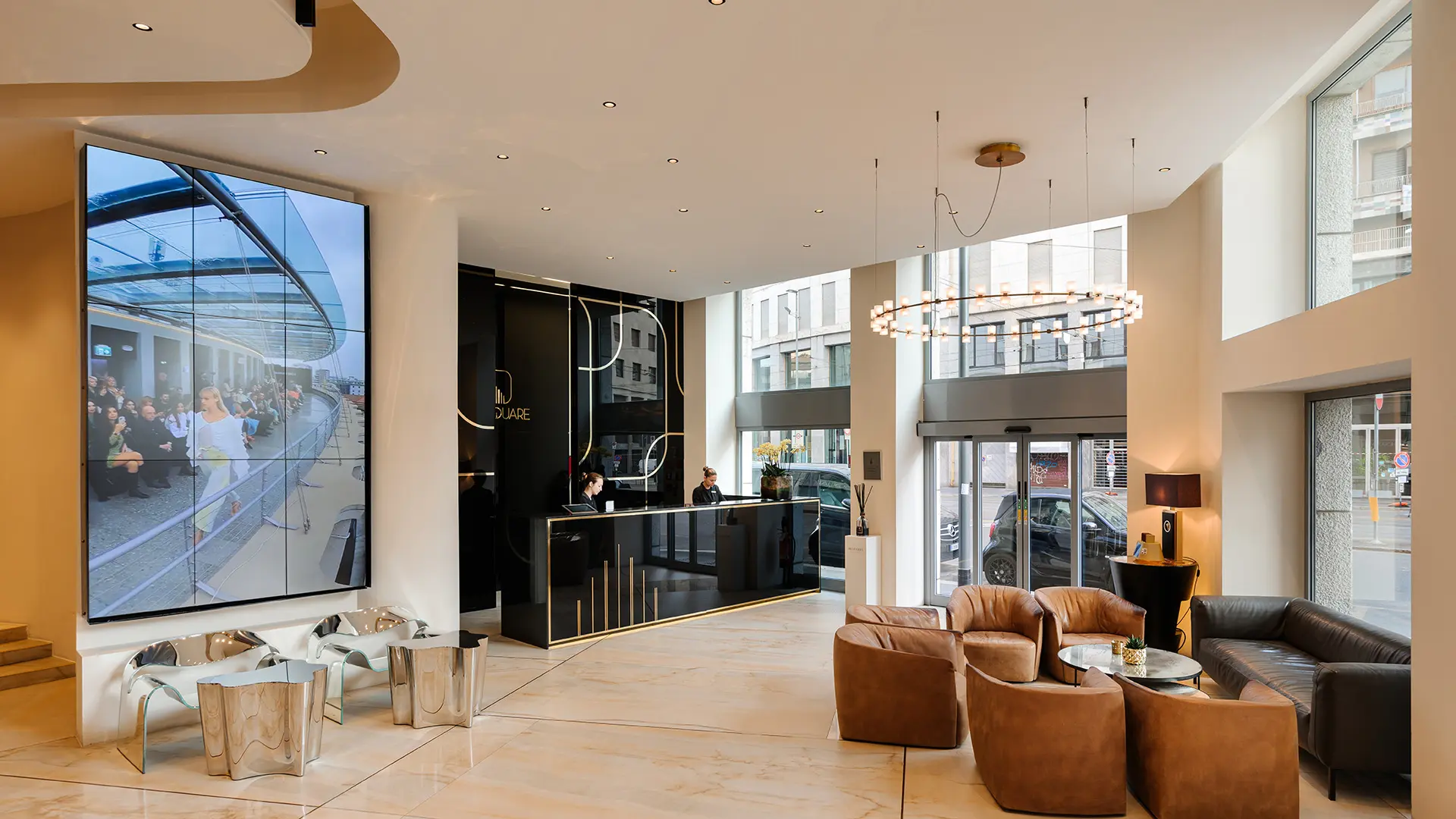Traceability, welfare, circularity, as well as art and culture: Arper, De Castelli, Florim, Flos and Pedrali present their points of view

Andres Reisinger and Alba de la Fuente, Winter House, courtesy photo
It may not be very "real", but in the meantime, the race to grab the best land in the metaverse is hotting up, and there are those who spend thousands of dollars to be the digital neighbour of a VIP
Let’s start by bringing some clarity. On October 28th 2021, Mark Zuckerberg announced the launch of Meta Platforms Inc., the name of the new company that will replace Facebook, and from that day on, the term metaverse has spread at fibre-optic speed.
It was certainly not a new term, since fans of cyberpunk science fiction books first came across it in the early ’90s. Put simply, the metaverse is a virtual world in which you can move, work, interact, play and live an authentic life through an avatar. In short, the world of the Internet and the future of social networks, but with more or less 3D features.
So far, it might seem like a cross between a video game and an ‘80s steampunk movie, and some have deemed Zuckerberg’s presentation too naive and utopian. Still, there are people out there who take the metaverse seriously, to the extent of investing in pixels instead of bricks.

Andres Reisinger and Alba de la Fuente, Winter House, courtesy photo
The game Second Life, already famous in the early 2000s, was and still is the first metaverse as we can imagine it. Other metaverses have been added to this one, such as the recent Sandbox and Decentraland, and who knows how many more will spring up over the next few years, with big tech companies willing to invest billions in these virtual worlds.
But there is something that makes Decentraland and the other metaverses different from Second Life and, above all, profitable. Each of these new virtual worlds has its own cryptocurrency, which can correspond to real gains. This opens the door to huge marketing and entertainment possibilities, with companies starting to launch exclusive events in the metaverse, such as the virtual concert recently organised by Jennifer Lopez. The rapper Snoop Dogg is building his own villa inside Sandbox, and apparently someone has paid $450,000 to buy the adjacent land and be close to the VIP.
So while we are wondering how much of what we are reading is real or virtual, in the true sense of the word, we are witnessing a real race to the pixel with companies and individuals rushing to grab land on which to build in these digital universes.

Andres Reisinger and Alba de la Fuente, Winter House, courtesy photo
The Metaverse Group is a property group that deals with real estate in the metaverse, said to have recently purchased a plot of land on Decentraland, investing more than 2 million dollars. Purchases on Decentraland are made in "mana," its sidechain. The cryptocurrency is proper and parallel to Ethereum (a cryptocurrency like the more famous Bitcoin) and certified by NFTs or certificates that attest to its authenticity and, especially, its non-reproducibility, both based on the blockchain.
What pushes up prices within a metaverse is that there are a limited number of plots of land, as in Decentraland, which consists of 90,000 parcels of land 50 feet by 50, in which, once purchased, you can create and organise whatever you need or want. Companies like Chanel, Tommy Hilfiger and Dolce&Gabbana, whose advertisements are already featured in Decentraland's "fashion district," are well aware of this.

Andres Reisinger and Alba de la Fuente, Winter House, courtesy photo
"It's like buying land in Manhattan 250 years ago when New York was first being built," Andrew Kiguel, chief executive of Tokens.com recently said in the Wall Street Journal; to which the journalist Eric Ravenscraft responded in Wired, that "buying 'real estate' on these platforms is like buying land in Manhattan, but in a world where anyone can create an infinite number of alternative Manhattans that are just as easy to get to."

Andres Reisinger and Alba de la Fuente, Winter House, courtesy photo
In any event, the metaverse and NFTs are also throwing open ample opportunities for creatives, designers, architects and artists, who have been creating for and in the metaverse for some time now. In January of this year, for example, Andres Reisinger, a visual artist and designer who has produced some collections of objects and works in NFT, presented Winter House, a residence created in collaboration with the architect Alba de la Fuente for the metaverse, inspired by the coldest season. Winter House is a virtual building characterised by precise geometric lines and restful colour shades, typical of Reisinger, to convey a sense of tranquillity: a winter paradise in the metaverse. This is the second virtual residence Reisinger and de la Fuente have designed together; their artistic and architectural visions chime and collide, triggering new ways of creating and bringing spaces to life, marking new milestones in the digital migration of real estate.
"We tried to imagine the winter season in the metaverse, gathering all the feelings of peace, stillness and comfort that we associate with winter, and translating them into residential form," says Reisinger. They both say that Winter House is a residential project that can be incorporated into any existing or future metaverse.
In short, it looks as though we're going to learn to live and invest in the pixel, and while it's hard to keep up with technology, and may seem as though we're talking about far-off futures, in reality, it's already happening, and the metaverse is growing day by day.


 Stories
Stories








